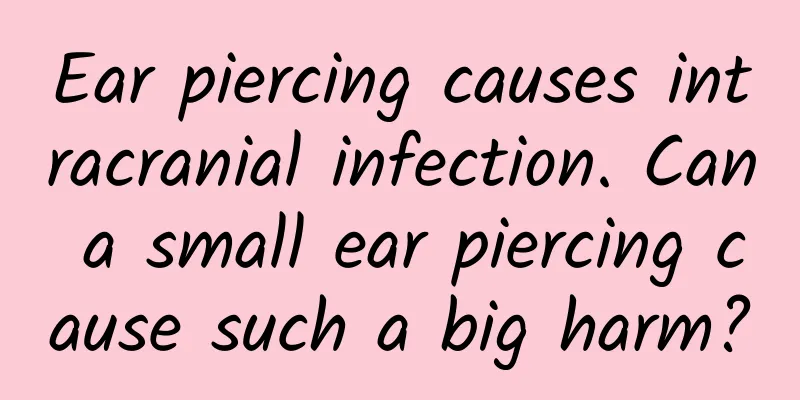Hepatitis C Virus - "A Future Without Hepatitis"

|
On the afternoon of October 5th, Beijing time, the 2020 Nobel Prize in Physiology or Medicine was announced. American and British scientists Harvey J. Alter, Michael Houghton and Charles M. Rice won this award in recognition of their discovery of the hepatitis C virus. The discovery of the hepatitis C virus further revealed the cause of other chronic hepatitis diseases, and subsequently led to great strides in the development of treatments and new drugs, saving millions of lives around the world. 1. What is hepatitis C virus? Hepatitis C virus (HCV) is one of the main pathogens causing chronic liver disease. It belongs to the Flaviviridae family and is a single-stranded positive-strand RNA virus. The external shape of the virus body is round, and the nucleocapsid is surrounded by a lipid-containing capsule with spikes on the capsule. The virus can easily cause varying degrees of damage to the human liver. In 1993, Simmonds et al. compared the nucleotide sequences of the non-structural protein 5 (NS5) region encoded by different HCV strains and conducted a phylogenetic analysis. HCV was divided into types 1-6 according to the order of discovery, and each type was further divided into several subtypes, represented by a, b, c, etc. At present, HCV has 6 main genotypes and more than 80 subtypes. The study of HCV genotypes and HCV genotypes has important clinical significance for the formulation of individualized anti-HCV treatment plans. 2. What are the dangers of hepatitis C virus? HCV can cause acute or chronic infection, and new HCV infection is usually asymptomatic. Some people have acute hepatitis, but it does not lead to life-threatening illness. Possible acute symptoms include fever, general fatigue, loss of appetite, nausea, vomiting, abdominal pain, dark urine, lighter stools, joint pain, and jaundice (yellowing of the skin and whites of the eyes). After 6 months, about 85% of acute infections become chronic. After 20 years of infection, about 60% to 70% develop liver disease, 10% to 20% develop cirrhosis, and the incidence of malignant liver disease and liver cancer is 5% to 7%. Although the number of hepatitis C patients is much smaller than that of hepatitis B, its risk level is not lower than that of the latter. On the contrary, hepatitis C is a viral infectious disease that seriously endangers human health. HCV is a highly variable virus. There is currently no effective vaccine to prevent this viral infection. Therefore, hepatitis C is more harmful to the health and life of patients than hepatitis B. 3. How can hepatitis C be prevented? Hepatitis C virus can be transmitted through blood, through sexual intercourse, or from infected mothers to their babies. The latter two modes of transmission are not very common. Casual contact such as breast milk, food or water, hugging and kissing infected people (except for patients with oral ulcers, periodontitis, etc.), and sharing food or drinks will not lead to the spread of hepatitis C virus. Because there is no HCV vaccine at present, the prevention of hepatitis C mainly reduces the incidence of hepatitis C by strictly screening blood donors, strengthening the management of blood products, and controlling the transmission of blood transfusions. 4. How is hepatitis C treated? The treatment of pegylated interferon (PEGαIFN) combined with ribavirin (RBV) is considered the standard of care (SOC) for the treatment of hepatitis C. Currently, about 90% of hepatitis C treatments in clinical practice use antiviral combination therapy. However, HCV genotype affects the patient's response to antiviral treatment, so the treatment course and regimen will be different for patients with different genotypes. Although the existing SOC has achieved certain efficacy in the treatment of hepatitis C, it cannot fully meet medical needs. Therefore, there is still room for improvement in SOC treatment. At the same time, with the deepening of research and understanding of hepatitis C virus, anti-hepatitis C drugs have become a hot spot for research and development. At present, they are mainly focused on three directions: new interferons and new interferon formulations, specific targeted therapeutic drugs and new drug combination therapy. I believe that in the near future, it will bring more hope for the treatment of hepatitis C. References: [1] The 2020 Nobel Prize in Physiology or Medicine was announced. The three of them won the award for this virus, Beijing Daily, 2020.10.5. [2] Aman W, Mousa S, Shiha G, et al. Current status and future directions in the management of chronic hepatitis C[J]. Virol J, 2012, 9:57. [3] Zhou Yimeng, Dou Xiaoguang, Zhang Lin. Research progress in hepatitis C virus genotyping detection methods[J]. Chinese Journal of Practical Internal Medicine, 2014, 34(08): 819-822. [4] Sun Ruina. Study on the active components of Ligustrum lucidum against hepatitis C virus and its mechanism of action[D]. Jiangxi Agricultural University, 2014. [5] Yang Xiaoyu, Wang Juxian. Research progress on new drugs and treatment regimens against hepatitis C virus[J]. Chinese Journal of New Drugs, 2014, 23(22): 2624-2630. [6] Zhuo Hong, Wang Tao, Xie Songmei, Chen Ying. Progress in chronic hepatitis C and its antiviral treatment[J]. Chinese Journal of New Drugs, 2015, 24(19): 2209-2213. [7] Hepatitis C, World Health Organization official website, July 27, 2020. [8]Huang Honglan, Shi Jinzhou. Medical Microbiology,[M]. Wuhan. Huazhong University of Science and Technology Press.2019.282. [9]Hao Yu. Medical Immunology and Microbiology,[M]. Beijing. China Central Radio and Television University Press.2015.296. |
Recommend
Sciatica pain during 7 months of pregnancy
Sciatica is a very common disease, especially for...
How many days should I drink black soybean milk to prepare for pregnancy?
There are a lot of natural estrogen foods in blac...
Can patients with uterine fibroids eat red beans?
Can patients with uterine fibroids eat red beans?...
Breaking up, cheating, divorce... Why is life so difficult for stone women?
While you are getting anxious and worried about t...
Why is there yellow leucorrhea for a few days after each menstrual period?
Leucorrhea is actually a substance secreted by wo...
World Intestinal Health Day | Pay attention to your health, let's start with the "intestines"
May 29th this year is the 18th World Gut Health D...
Seven bad movements that hurt women's waist the most
Many women experience back pain, especially durin...
Ischemic stroke: MRI, the "superhero" that reveals the secrets of the brain
Author: Jia Wenxin Pingliang Second People's ...
Low gestational sac medical abortion
The conditions inside the uterus of every pregnan...
Leucorrhea routine pus cells one plus
If you find that the result of your routine leuco...
What should women eat to be good for their skin? These fruits can satisfy you
In order to make their skin better, women will tr...
How to do home care for female cystitis?
Female cystitis mostly occurs in women of childbe...
Why do you gain weight after menopause?
Many people will find that women are prone to gai...
Is it scientific to use a massage to reduce milk production?
When women are weaning their children, they gener...
HPV infection, the virus increased from 1 to 12, she sat paralyzed in the clinic, but the doctor said she was getting better
Xiaomei had been waiting for this day for 90 days...









